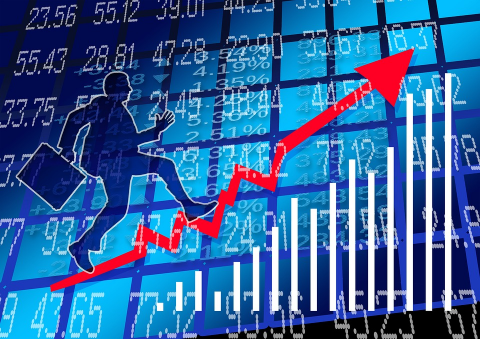The unsinkable U.S. stock market just tied a historic record for not falling

- It has been more than a year since the S&P 500 had a 5% drawdown, a near-record -
By Ryan Vlastelica, MarketWatch
The U.S. stock market, which is coming off a year that saw it log a series of milestones for strength amid an unprecedented lack of downside, is not be done setting records.
The S&P 500 just did something it hasn't done for more than 20 years, the latest example of a bull market that just won’t quit.
With the close of trading on Thursday, the index has gone 394 sessions without a 5% drawdown, tying for the longest stretch in the history of the index, according to Goldman Sachs data. The previous record occurred between 1994 and 1996 and also lasted for 394 sessions. It will set a new record on Friday, assuming the current trend continues, which seems almost inevitable. The S&P is trading near record levels and it would have to plummet more than 4% on Friday for the streak to end with a tie.
The S&P 500 has closed higher in nine of the 12 sessions that have occurred thus far this year, ending at a record in each of its positive sessions. It closed at records in the first six sessions of the year, something it hadn't done since 1964, and the benchmark index’s first ten sessions marked the best start to a year since 2003.
The S&P is already in its longest-ever stretch without a 3% decline, a drop that is historically extremely common. A decline of such meager magnitude hasn't occurred since Nov. 7, 2016; the index has been extending this record since surpassing the previous one in October.
The lack of drawdowns is a sign of how strong the market has been in recent months. The S&P rose 19.4% over 2017, its best year since 2013, and on a total-return basis it has gained for 14 straight months, a record. However, most of the daily gains have been slight, which points to the lack of volatility in markets, which is, as much as the factors driving markets higher, the real cause behind the lack of pullbacks.
Goldman called low volatility “the defining characteristic of the U.S. equity market in 2017.” The investment bank wrote the S&P 500 had a realized volatility score of 7 in the year, which is “ranked in the first percentile since 1930.” It added that “the risk-adjusted price return of 2.9 ranked in the 97th percentile relative to history.”
According to the WSJ Market Data Group, the absolute daily percentage change for the Dow Jones Industrial Average was 0.31% in 2017. It was 0.3% for the S&P, and in both instances, that represents the smallest absolute daily percentage since 1964. For the Nasdaq Composite Index, the absolute daily percentage change was 0.44%, the smallest since 1989.
The average observed one-month volatility in the S&P 500 was lower than any other year since 1970 in 2017, and of the 56 lowest closing levels in the history of the Cboe Volatility Index (since 1990), 47 of them occurred in 2017. The so-called “fear index” also notched two all-time closing lows.
From MarketWatch
